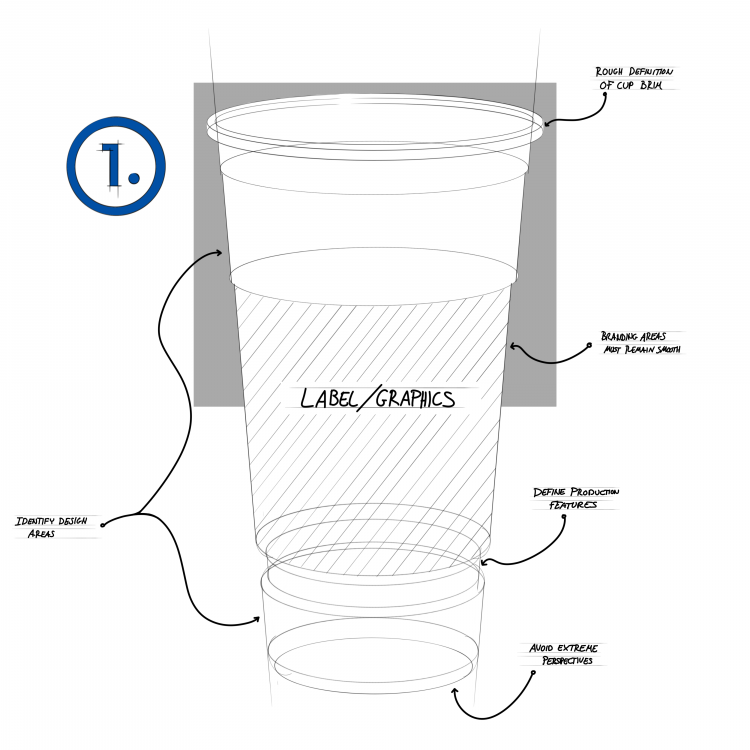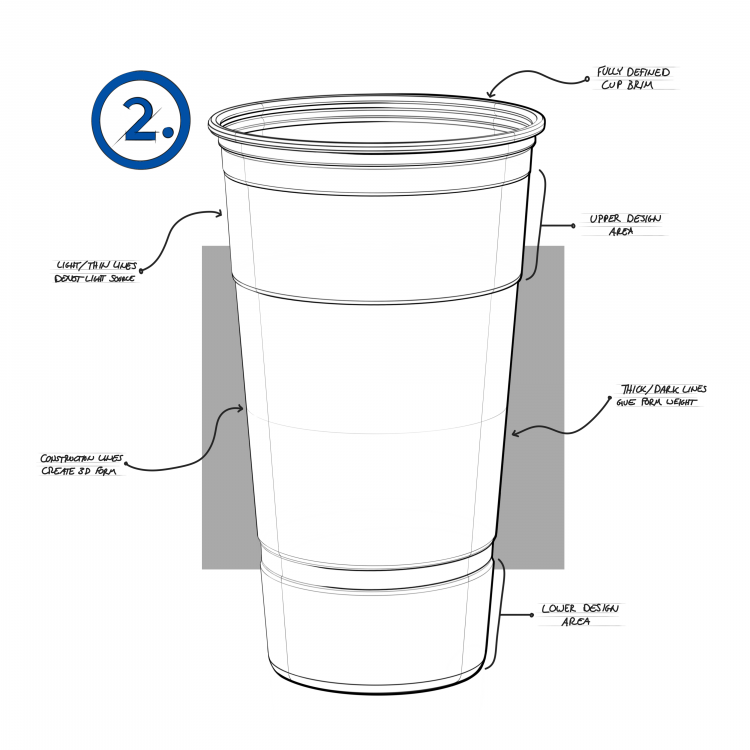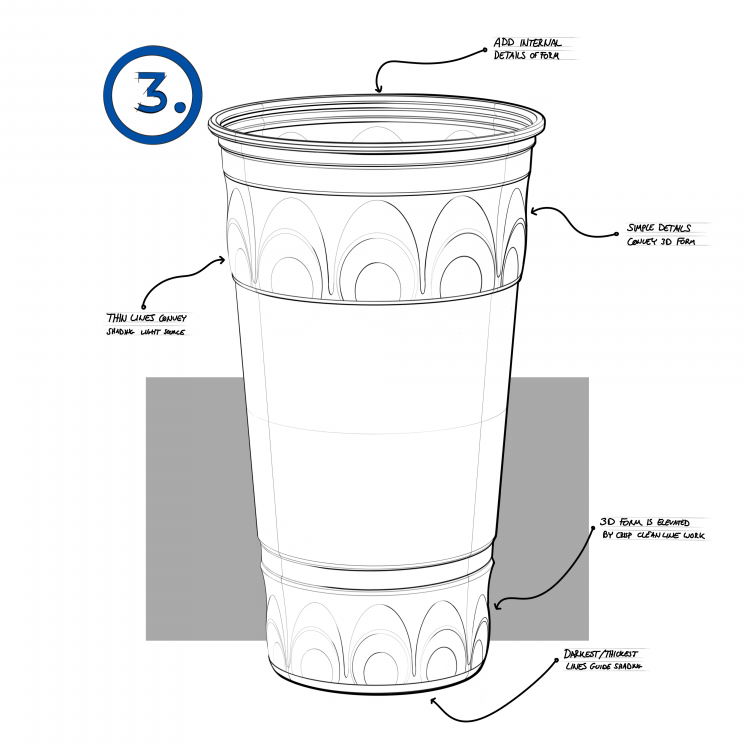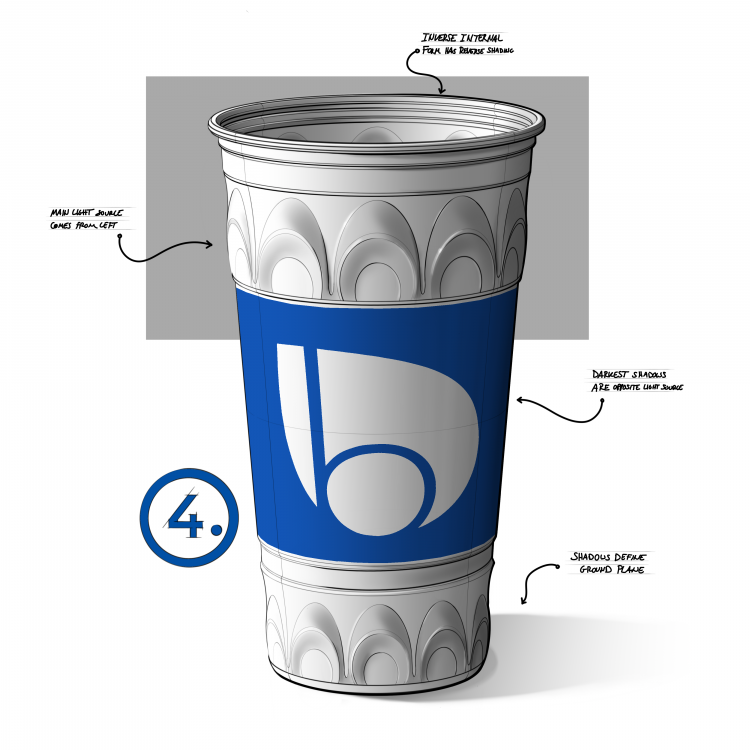Design sketching is an art form that tries to convey the form, function, and aesthetic for an object utilizing a specific process of refinement. The sketching aspect of the design process serves to provide a visual form to an idea that may be a few words on a napkin, or a quickly drawn line sketch. The designer takes this very rough inspiration and breathes life into it.
The first stage of the design sketch process is creating a rough perspective drawing that conveys the simplest version of the idea. This rough sketch builds out the features that will be elaborated on as the sketch develops but makes sure they are all in the right place.
The second stage is fleshing out the details of specific areas of interest. A grip feature, or form embellishment can be incorporated into the design to provide an aesthetic that defines the design with a specific style
The fourth stage is adding color, shading, texture and lighting to bring the design off the page in a real way. The closest stage to fine art gives the object a real look that allows the viewer to see a real object and not just a sketch.





